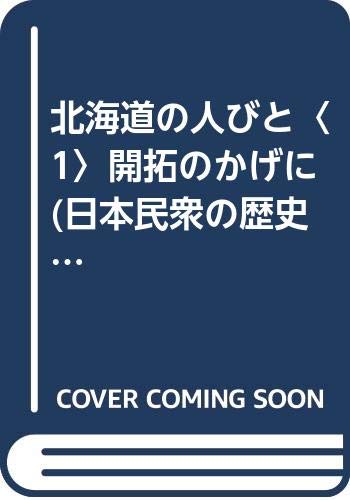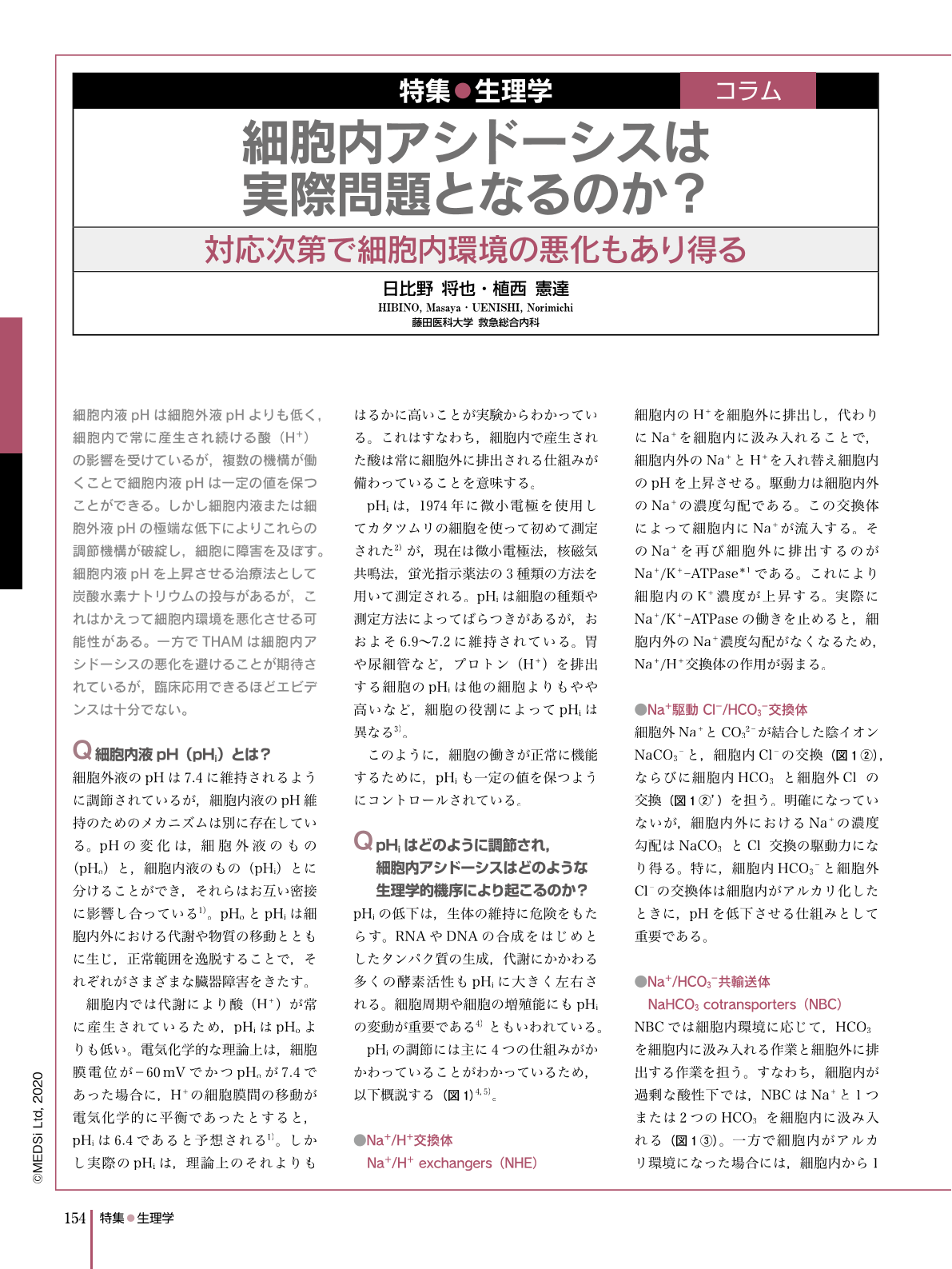1 0 0 0 Art in education = 教育美術
- 出版者
- 教育美術振興会
- 巻号頁・発行日
- vol.58(8), no.662, 1997-08
1 0 0 0 OA 公共性の構造転換とアソシエーション革命(<特集>ボランティア活動と「公共性」)
- 著者
- 佐藤,慶幸
- 出版者
- 国際ボランティア学会
- 雑誌
- ボランティア学研究
- 巻号頁・発行日
- vol.3, 2002-11-01
公共性とは、各個人が各自の社会生活を営む過程で、<私>のものとして蓄えたものを、一定のルールにもとづく他者との相互作用関係のなかで、言説と行為として表出するところの、公開的な社会空間である、と定義する。公共性の類型として、市民的公共性、公的公共性、そして共同体的公共性を提示し、これら三つの公共性の関係について論及する。市民的公共性は、多様なアソシエーション個体群から形成され、「市民社会」の基本的構成要素をなす。この市民社会は、非市場経済的(非営利的)、かつ非政府的なアソシエーションからなるという点で、それは労働・資本・商品などの市場によって方向づけられる資本主義社会としての「市民社会」とは異なる。本論で用いる市民社会概念は、資本主義社会における非資本主義的構造としての市民社会である。民主的国家においては、国家は言論の府としての国会をとおして公的公共性を形成し、官僚制機構をとおして公的公共政策を遂行し、国民生活に大きな影響を与える。しかし、日本の場合、この公的公共性と市民的公共性との関係に対して、共同体的公共性が介入し公的公共性のあり方に大きな影響を与えている。しかし、歴史の大きな流れは、公権力と結びついた共同体的公共性が、市民革命や市民運動をとおして、個人の人権と生命の尊重を基盤とする、自由で平等主義的な市民的公共性へと転換していく方向にある。この転換を可能にするのが、アソシエーション革命であり、ボランティア活動である。
1 0 0 0 OA 重金属とメタロチオネイン
- 著者
- 鈴木 和夫
- 出版者
- The Society of Synthetic Organic Chemistry, Japan
- 雑誌
- 有機合成化学協会誌 (ISSN:00379980)
- 巻号頁・発行日
- vol.39, no.11, pp.1073-1082, 1981-11-01 (Released:2009-11-13)
- 参考文献数
- 65
- 被引用文献数
- 6 5
Metallothionein is named for its characteristic structure, a low molecular weight metal-binding protein (61 amino acid residues) rich in cysteinyl residues (20 residues) and heavy metals (7 metals for zinc and cadmium). Heavy metals which can induce and can be bound to metallothionein are restricted to seven heavy metals (zinc, copper, cadmium, silver, mercury, gold, and bismuth). Namely, heavy metals with higher affinity than zinc can be bound in vivo to metallothionein.Other heavy metals such as nickel, manganese, chromium, and so on can also induce metallothionein but can not be bound to metallothionein and the induced metallothionein contains only zinc or zinc and a small amount of copper. A great diversity of stresses other than heavy metals such as starvation, operation, administrations of alkylating agents and inflammatory drugs also induces metallothionein. Glucocorticohormone which may be related to the stresses also induces metallothionein and high concentrations of metallothionein are observed in the livers of foetus and neonatus. Biological functions of metallothionein have been postulated to be a protective protein from harmful heavy metals and a regulating protein for the homeostasis of zinc and copper.
1 0 0 0 世界トップ水準の「国立研究開発法人」スタート
- 著者
- 国立研究開発法人科学技術振興機構
- 出版者
- 国立研究開発法人 科学技術振興機構
- 雑誌
- JSTnews (ISSN:13496085)
- 巻号頁・発行日
- vol.2015, no.4, pp.3-7, 2015
イノベーション時代に合わせた国の新しい法人制度が12年ぶりに発足する。科学技術振興機構(JST)や宇宙航空研究開発機構(JAXA)など30の公的研究機関が4月1日から「国立研究開発法人」として衣替えし、日本医療研究開発機構(AMED)が新設された。日本の強みを生かした制度で、大学の若手研究者や企業からの期待も大きい。わが国の科学技術戦略を実施・推進する中核的な組織であるJSTの中村道治理事長に新制度にかける思いと覚悟を語ってもらった。さらに、この制度の政策・立案に数年がかりで取り組んできた土屋定之・文部科学審議官にはその真の狙いを、森本浩一・内閣府政策統括官には科学技術政策の舵取りの立場から、それぞれの期待や要望を聞いた。
1 0 0 0 認知症の「陰性」周辺症状に対する漢方薬の有用性に関する基礎研究
認知症においては、記憶障害・見当識障害などの中核症状と共に、行動・心理的な周辺症状(BPSD)が患者の生活の質を著しく低下する。本研究では、認知症のBPSDに対する漢方薬の有用性を基礎科学的なアプローチにより明らかにすることを研究目的とした。前年度に引き続き、急性認知症モデルのスコポラミン誘発記憶障害モデルマウスにおいて、五苓散の作用を検討した。五苓散はオープンフィールド試験でスコポラミンによる自発運動量の増加を抑制したことに加え、強制水泳試験では、スコポラミン単独投与群よりもさらに無動時間を短縮させたことから、五苓散は急性認知症モデルにおけるBPSDの陰性症状および陽性症状の両方を改善する可能性が示唆された。作用機序については、五苓散の抗コリン作用を中心に現在、解析を行っている。一方、体内の酸化ストレスの亢進は認知症の発症を促進することが知られている。我々は先行研究において、医療用漢方製剤の抗酸化活性を評価した結果、抗お血作用を有する漢方薬は高い抗酸化活性を示すことを明らかにした。今年度においては、抗お血漢方薬の抗酸化作用の詳細を解析した。その結果、実証に用いられる抗お血剤は抗酸化活性の発現に相関が認められるた。漢方薬の中に、通導散と桃核承気湯は最も強い抗酸化活性を示し、構成生薬の中に、ダイオウとオウゴンは最も抗酸化活性に貢献した。現在、これら漢方薬の抗酸化活性を介した認知症のBPSDに対する効果を検討を行っている。
1 0 0 0 OA ジンチョウゲ科及びトウダイグサ科薬用植物由来の生物活性ジテルペノイドの探索研究
- 著者
- Fumiya Mizuno Satoko Koganemaru Hiroshi Irisawa Akira Saito Takashi Mizushima
- 出版者
- The Japanese Association of Rehabilitation Medicine
- 雑誌
- Progress in Rehabilitation Medicine (ISSN:24321354)
- 巻号頁・発行日
- vol.6, pp.20210041, 2021 (Released:2021-10-23)
- 参考文献数
- 34
Objective: Knee valgus during jump landing is a cause of knee injuries during sports activities. Body recognition is important for maintaining the knees and other body parts in their proper positions. The aim of this study was to investigate whether knee valgus during jump landing in healthy young women is related to the inaccuracy of recognition of bilateral knee positions in the squatting position.Methods: In 39 healthy young women, the degree of knee valgus was evaluated during the drop vertical jump test using the ratio of the knee separation distance to the ankle separation distance. The accuracy of recognition of bilateral knee positions in the squatting position was evaluated by having the blindfolded subjects indicate with their index fingers the subjective positions of their bilateral patellae by placing their fingers on a horizontal bar positioned in front of them 3 cm below the navel. The difference ratio of the recognized distance to the actual distance between the bilateral patellae was measured as an inaccuracy index.Results: The degree of knee valgus during the drop vertical jump test was positively correlated with the degree of inaccuracy of the recognized knee position with the knees in the neutral position (r=0.358, P=0.025).Conclusions: In healthy young women, knee valgus during jump landing was significantly correlated with the inaccuracy in knee position recognition in the squatting posture. This finding suggests that the assessment of knee position recognition in the squatting position could be useful as a screening tool for preventing knee injuries on jump landing during sports activities.
- 著者
- 百瀬 容美子 伊藤 宏
- 出版者
- 常葉大学教育学部
- 雑誌
- 常葉大学教育学部紀要 = Tokoha University Faculty of Education research review (ISSN:2188434X)
- 巻号頁・発行日
- no.37, pp.281-293, 2017-03
本研究では,先天全盲選手向け運動イメージ生成尺度の原案を提案することを目的とした.そのために,我が国トップ水準にあるブライドサッカー選手1 名のPAC(個人別イメージ構造)分析を行った.その結果,先天全盲選手ならではのイメージの利用として,1)運動イメージを描く上で競技場であるピッチに対する全体的な俯瞰図としてイメージしていること.2)自分の動きと相手選手との相互距離感をイメージしていること,3)自分と味方選手との距離感,味方のゴールキーパーとの距離感も考慮に入れた空間的なイメージをしていたことが判明した.こうした新たな知見である3 カテゴリーに関して,国内外を通して高い信頼性と妥当性が確認されている視覚心像鮮明性質問紙(Vividness of Mental Imagery Questionnaire:VVIQ) に倣い,5 件法で20 項目からなる先天全盲選手向け運動イメージ生成尺度原案が作成された.
- 著者
- 日比野 将也 植西 憲達
- 出版者
- メディカル・サイエンス・インターナショナル
- 巻号頁・発行日
- pp.154-158, 2020-01-01
細胞内液pHは細胞外液pHよりも低く,細胞内で常に産生され続ける酸(H+)の影響を受けているが,複数の機構が働くことで細胞内液pHは一定の値を保つことができる。しかし細胞内液または細胞外液pHの極端な低下によりこれらの調節機構が破綻し,細胞に障害を及ぼす。細胞内液pHを上昇させる治療法として炭酸水素ナトリウムの投与があるが,これはかえって細胞内環境を悪化させる可能性がある。一方でTHAMは細胞内アシドーシスの悪化を避けることが期待されているが,臨床応用できるほどエビデンスは十分でない。
1 0 0 0 OA 亜鉛酵素
- 著者
- 松本 和子 不破 敬一郎
- 出版者
- The Society of Synthetic Organic Chemistry, Japan
- 雑誌
- 有機合成化学協会誌 (ISSN:00379980)
- 巻号頁・発行日
- vol.39, no.11, pp.1053-1061, 1981-11-01 (Released:2009-11-13)
- 参考文献数
- 34
- 被引用文献数
- 2 2
The history of the study of zinc enzymes and their characteristics and the classification are briefly surveyed, together with the general remarks on the structure and function of metals in metalloenzymes. Among about 90 zinc enzymes so far discovered, special emphasis is placed on horse liver alcohol dehydrogenase and the recent experimental results of UV-VIS spectra, circular dichroism and X-ray crystallography are presented. The M. W. of horse liver alcohol dehydrogenase is 80, 000 and the enzyme consists of two subunits, each of which contains two zinc atoms, and 2 mols of NAD+ is necessary as cofactor for the enzyme. The details of the structure and the function of zinc in the enzyme are discussed and the possible reaction mechanism is explained. The paper also briefly introduces the recently extracted human liver alcohol dehydrogenase.
1 0 0 0 OA 中島棕隠の『鴨東四時雑詠(鴨東竹枝)』をめぐる一考察――日本的教養の一側面として
- 著者
- 綿本 誠
- 出版者
- 国士舘大学21世紀アジア学会
- 雑誌
- 21世紀アジア学会紀要
- 巻号頁・発行日
- vol.3, 2005-03
1 0 0 0 OA 国立大学温泉医学研究所の軌跡
- 著者
- 東 威 合田 純人
- 出版者
- 一般社団法人 日本温泉気候物理医学会
- 雑誌
- 日本温泉気候物理医学会雑誌 (ISSN:00290343)
- 巻号頁・発行日
- vol.82, no.2, pp.48-52, 2019-05-31 (Released:2019-06-19)
- 参考文献数
- 3
我が国は温泉資源に恵まれ,人々は古くから経験的に温泉を病気の治療,疲労回復に利用してきた.このような経験的温泉効果を近代医学により解明するために,1926年に東京帝国大学医学部に温泉気候物理医学を研究する内科物理療法学講座が創設されたのに始まり,1951年の群馬大学附属草津分院まで国立の七大学に附属温泉医学研究施設,あるいは温泉病院が設立された. これにより我が国の温泉医学研究は推進されてきたが,1990年代に大学改革の一環として国立大学独立行政法人化の検討が始まると「新分野の研究や医療」に対応した機構改革を迫られ,国庫補助の削減もあって温泉地の施設は本院講座への統合,市中病院への転換あるいは閉鎖され,2018年の鹿児島大学霧島リハビリテーションセンターの本院への統合を最後にすべて消滅した.残念ではあるが,各施設関係者の調査に基づいて各施設の変遷,施設長と主要業績などを学会誌に記録し,これまでの温泉医学研究がこれからも日々進歩する科学的知識,技法を取り入れて一層発展することを期待したい.
- 出版者
- 日経BP社
- 雑誌
- 日経ビジネス (ISSN:00290491)
- 巻号頁・発行日
- no.1820, pp.68-71, 2015-12-14
原稿を書くときに欠かせないのが、二十数年前に妻の静子さんと訪れたスコットランドで見つけた「ラップデスク」である。縁取りのある画板の裏にクッションをつけたもので、膝に乗せると、そこが書斎になる。 「日本でも数寄屋橋のソニープラザ(現プラザ)…
- 著者
- 馬越 啓介 木下 勇 松本 圭司 大井 俊一郎
- 出版者
- 公益社団法人 日本化学会
- 雑誌
- 日本化学会誌(化学と工業化学) (ISSN:03694577)
- 巻号頁・発行日
- vol.1986, no.11, pp.1517-1520, 1986-11-10 (Released:2011-05-30)
- 参考文献数
- 7
- 被引用文献数
- 1
The violet bis(2-aminoethyl 2-pyridyl sulfide)cppper(II) perchlorate [1] and blue bis(2-aminoethyl 2-pyridyl sulfoxide)copper(II) perchl3fate [2] were synthesized and have been characterized by means of X-ray crystallography. The Cu(II) atom in 'the cation o[1] is located at the center of symmetry and has a square-planar coordination by 4 N atoms. The S atom in Cu-NH2CH2CH2S-C-N ring lies in the position near to the axial site. The Cu…S distance is 2.832(1) Å and the Cu→S vector intersects the coordination plane at 59.8°. The Cu atom in the centrosymmetric cation of [2] has an elongated octahedral coordination by 4 N (equatorial) and 2 O atoms (axial). The Cu-O distance is 2.301(7) Å.
1 0 0 0 OA ホウ酸塩ガラスの構造と塩基度に対する分子軌道法からのアプローチ
- 著者
- 内田 希 前川 尚 横川 敏雄
- 出版者
- 公益社団法人 日本化学会
- 雑誌
- 日本化学会誌(化学と工業化学) (ISSN:03694577)
- 巻号頁・発行日
- vol.1986, no.11, pp.1414-1424, 1986-11-10 (Released:2011-05-30)
- 参考文献数
- 38
- 被引用文献数
- 2
半経験的分子軌道法MNDOを二元系ホウ酸塩ガラスに適用し,その構造と塩基度に対する考察を進めた。ホウ酸塩ガラス中に存在するとされるpentaborate,triborate,diborate構造のクラスターを組み立て構造の最適化を行なった。計算結果は実験的に決定された構造をよく再現した。四配位ホウ素(4B)あるいは非橋かけ酸素(NBO)の形成にともなうB-O結合長の変化は電荷の移動と対応し, Gutmannの結合長変化則による予想と一致した。これらを基に分子式[H8B12O23]2-をもち種々の組成における構造を反映した異性体を組み立てた。これらのクラスター中の,軌道相互作用による非局在化エネルギー,Sparkle親和力,陽子親和力を求め塩基度の尺度とした。ハードおよびソフト酸・塩基の考え方にしたがった場合,クラスター中のBO4-構造単位はハード塩基に分類され・非橋かけ酸素はむしろソフト塩基に分類された。二元系ホウ酸塩中の4Bの安定性は対となる塩基性酸化物の種類に依存し,アルカリ酸化物とH2Oの場合で大きく異なることが示された。
1 0 0 0 運動やサプリメント摂取が酸化ストレス防御系へおよぼす影響について
- 著者
- 丸岡 弘 高柳 清美 伊藤 俊一 森山 英樹 木戸 聡史 井上 和久 藤縄 理 小牧 宏一
- 出版者
- 公益社団法人 日本理学療法士協会
- 雑誌
- 理学療法学Supplement
- 巻号頁・発行日
- vol.2008, pp.A3P3124, 2009
【目的】一般的にストレスマネジメントは、サプリメント摂取や運動などが知られている.しかし、運動などによる酸化ストレス防御系への影響を検討した報告が少ない.そこで今回、実験的疲労動物モデルを用いて運動やサプリメント摂取が酸化ストレス防御系へおよぼす影響について検討した.<BR>【方法】実験動物はWistar系雄性ラット19匹(8週齢)を対象とした.ラットを1週間馴化飼育後に実験1、さらに1週間後に実験2を実施した.酸化ストレス防御系は活性酸素・フリーラジカル分析装置(H&D社製FRAS4)を使用し、酸化ストレス度(d-ROM:酸化ストレス度の大きさ)と抗酸化能(BAP:抗酸化力)を安静時(RE)と終了直後(PO)に測定し、d-ROM/BAP比(RB比:潜在的抗酸化能)を算出した.実験1(重量負荷強制遊泳試験). 試験は水温23°Cの水を張った黒色円筒容器に、体重の6%のおもりを尾部に装着して2回遊泳(初回遊泳試験後30分間の休息)させた.遊泳は頭部が完全に5秒間水没するまでとして、遊泳時間を計測した.実験2. 対象を10時間以上の絶飲食とした3群(A群7例;行動制限なし、B群6例;行動制限あり、C群6例;絶飲食直前にRoyal Jellyを300mg/Kg強制経口摂取・行動制限なし)に区分し検討した.なお、実験に当たっては埼玉県立大学動物実験委員会の承認を得て実施した.統計学的処理は分散分析と多重比較、相関分析、T検定を用い有意水準を5%未満とした.<BR>【結果】実験1. d-ROMはREとPOを比較して有意差を認めなかったが、BAPとRB比では平均16~19%の有意な増加を認めた(いずれもp<.01).またRB比と遊泳時間との間には、相関を認めなかった.実験2. d-ROM平均変化率はREとPOを比較してA群;3%>B群;-1%,C群;-12%、BAP平均変化率はB群;18%>A群;8%,C群;8%、RB比平均変化率はB群;35%>C群;-6%,A群;-10%(いずれもp<.01~.001)となった.<BR>【考察】遊泳試験(実験1)では抗酸化力を増加させたことにより、酸化ストレス度に変化を生じなかったことが示された.つまり、遊泳時間に関連せずに潜在的抗酸化能を賦活させたことが考えられた.実験2より行動制限なしは酸化ストレス度の増加と共に潜在的抗酸化能の減少、行動制限ありでは抗酸化力と潜在的抗酸化能の増加が示された.このことから、行動制限の有無は酸素摂取との関連などから酸化ストレス防御系に影響をおよぼすことが考えられた.さらに、Royal Jellyの事前投与は酸化ストレス度の減少に繋がるが、潜在的抗酸化能に影響をおよぼさないことが示された.<BR>【まとめ】今回設定した遊泳試験では潜在的抗酸化能を賦活させた.また行動制限やサプリメント摂取は、酸化ストレス防御系と関連を示した.
1 0 0 0 OA 肯定的自己イメージが人間力を育成する
- 著者
- 大石 加奈子
- 出版者
- 公益社団法人 日本工学教育協会
- 雑誌
- 工学教育 (ISSN:13412167)
- 巻号頁・発行日
- vol.61, no.3, pp.3_22-3_26, 2013 (Released:2013-06-06)
- 参考文献数
- 4
In recent years, quite a number of higher educational institutions putemphasis on cultivating human quality among their students. However, it is difficult to let students make voluntary and creative action for themselves. One of the major reasons for students not to be positive for enhancing human senses is that they have the tendency not to think of themselves as valuable being. Human behavior and emotion are based on self-image. As long as students have negative recognition of themselves, it will be difficult to do learning positively. In this paper how human behavior is affected by self-image is shown and a way of communication to elicit appropriate behavior is discussed on the base of the principle of behavioral science.
- 著者
- 中川 雅史 内藤 京子 上農 喜朗
- 出版者
- 日本循環制御医学会
- 雑誌
- 循環制御 (ISSN:03891844)
- 巻号頁・発行日
- vol.29, no.1, pp.71-75, 2008 (Released:2008-07-02)
- 参考文献数
- 6
Many kinds of anesthetic regimens are employed for fast-track cardiovascular surgery. We introduce our fast-track anesthesia method using remifentanil aimed for tracheal extubation in the operation room after cardiovascular surgery. Anesthesia was induced and maintained by target controlled infusion of propofol(in cases using cardiopulmonary bypass(CPB)) or sevoflurane(in cases not using CPB) with remifentanil infusion 0.3mcg/kg/min. Intravenous fentanyl infusion 0.5μg/kg/hr was started at about 2 hours before the end of surgery for postoperative analgesia. After the surgery, patients were awaken and extubated if chest X-ray didn’t show any abnormal signs. Tracheal extubation in the operation room was achieved 58.3% of patients, and no severe complication was observed. Compared with having been possible for the operating room extubation as for 76.5% of cardiac surgery, the vascular surgery was able to do the operating room extubation only 14.3%(p=0.005). However, when the cases which were able to carry out the extubation was included within 4 hours after ICU entering, the extubation was possible for 83.3% of total cases. Thus, this anesthetic method with remifentanil could be used as one of regimens for fast-track cardiovascular anesthesia.
- 著者
- 鈴木 泉
- 出版者
- 神戸大学社会学研究会
- 雑誌
- 社会学雑誌 (ISSN:02895374)
- 巻号頁・発行日
- no.20, pp.95-110, 2003

